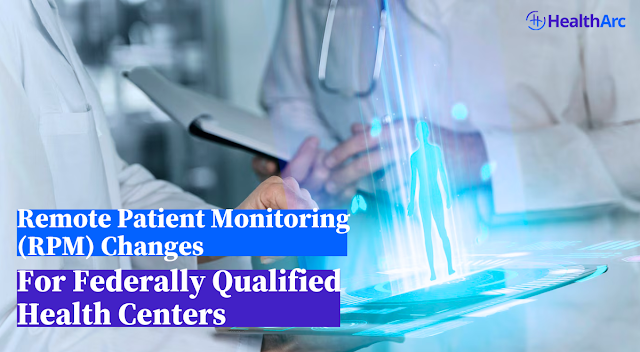Understanding RPM Software Pricing: What Drives the Cost?
As healthcare organizations continue shifting toward value-based and preventive care, Remote Patient Monitoring (RPM) has emerged as a cornerstone of digital health innovation. However, many providers still wonder — what determines the cost of RPM software?
From device fees to staffing models, several factors influence how much a practice pays for its remote patient monitoring software. Let’s explore these elements and how you can optimize cost without compromising care quality.
Learn the complete breakdown in our detailed guide: Remote Patient Monitoring Pricing Structure and Models for Healthcare Providers
What Is Remote Patient Monitoring Software and Why Is It Essential?
Remote Patient Monitoring software enables healthcare providers to track patients’ vital signs — such as blood pressure, oxygen levels, and glucose — outside the clinic. By continuously monitoring chronic conditions, clinicians can intervene early and prevent hospitalizations.
Beyond clinical benefits, RPM improves Medicare reimbursement opportunities through CPT codes like 99453, 99457, and 99458, making it both a care and revenue driver.
Discover how RPM improves chronic care outcomes in Chronic Care Management Software.
What Are the Main Components of RPM Pricing?
When evaluating RPM pricing, it’s essential to understand the cost breakdown. Most remote patient monitoring platforms include three major components:
Software Licensing Fees – This covers access to the RPM platform, analytics dashboards, and integrations. SaaS (software-as-a-service) pricing models may charge per provider or per enrolled patient.
Device Costs – Includes medical devices like blood pressure cuffs, pulse oximeters, or glucose meters. Providers may choose Bluetooth-enabled or cellular devices depending on patient demographics.
Service and Support Fees – These cover onboarding, training, technical support, and ongoing updates. Some full-service vendors also include staffing and patient engagement assistance.
To understand the structure in depth, visit Top RPM and CCM Companies Offering SaaS & Full-Service Solutions.
How Do Different Pricing Models Affect RPM Costs?
There’s no one-size-fits-all approach to remote patient monitoring pricing. Providers typically choose between the following models based on their resources and operational goals:
SaaS (Software-Only) Model: Practices pay a monthly software subscription and handle clinical monitoring internally. Ideal for organizations with in-house staff.
Full-Service Model: The vendor provides devices, patient onboarding, and monitoring staff for a per-patient monthly fee.
Hybrid Model: Combines the advantages of SaaS flexibility with outsourced staffing support.
How Do Device and Connectivity Options Influence RPM Pricing?
One of the most significant pricing drivers in an RPM program is the type of device used.
Bluetooth Devices – Lower cost but require patients to pair them with a smartphone.
Cellular Devices – Higher cost but provide seamless data transmission, ideal for elderly patients or those without smartphones.
Integrated Device Kits – Include multiple monitoring tools in one package for patients with multiple chronic conditions.
For guidance on selecting the best devices, read How to Choose the Best Weight Scale for Remote Patient Monitoring.
What Role Do Integration and Compliance Play in RPM Software Costs?
Healthcare providers must ensure that their care management software complies with HIPAA and SOC 2 standards while integrating with existing EHR systems.
These features may increase upfront costs but ensure long-term scalability and data security. Platforms with advanced interoperability (FHIR, HL7) can exchange patient data seamlessly, enhancing workflow efficiency.
Learn about secure integrations in SOC 2 and HIPAA Compliance for Remote Patient Monitoring.
How Does Staffing and Monitoring Affect Total RPM Cost?
Staffing models have a direct impact on RPM pricing.
In a SaaS RPM platform, clinics use their own staff to review data and communicate with patients.
In contrast, full-service healthcare software providers like HealthArc offer trained monitoring teams who manage patient alerts and documentation, reducing internal workload.
See how full-service models streamline care in Remote Therapeutic Monitoring Use Cases.
Are There Hidden Costs in RPM Implementation?
Providers should also budget for hidden or variable costs, such as:
Onboarding and Training Fees – Initial setup and staff training sessions.
Device Replacement Costs – For lost or damaged equipment.
Customization Fees – For white-label branding or integration with other systems.
Patient Engagement Tools – Automated reminders, educational content, and multilingual support.
Understanding these variables ensures realistic cost planning and sustainable program growth.
How Can Providers Optimize Their RPM Budget?
To control costs while maximizing outcomes, providers should:
Choose a flexible vendor offering both SaaS and full-service models.
Leverage chronic care management software alongside RPM for holistic patient management.
Prioritize platforms that integrate seamlessly with EHRs.
Use automated reporting to save staff time.
Track ROI by comparing reimbursement rates against program costs.
For strategies to scale affordably, explore Future Trends in RPM and CCM for Remote Healthcare in the United States.
Final Thoughts: What’s the Smartest Way to Invest in RPM?
Choosing the right remote patient monitoring software isn’t just about price — it’s about value, reliability, and scalability.
A well-designed RPM platform allows providers to expand care access, strengthen patient engagement, and unlock new reimbursement opportunities — all while keeping long-term costs sustainable.
At HealthArc, we empower healthcare organizations with customizable, HIPAA-compliant, and scalable healthcare software services that align with your clinical and financial goals.
Visit Remote Patient Monitoring Pricing Structure and Models for Healthcare Providers to understand how HealthArc simplifies pricing for your practice.



%20Changes%20for%20Federally%20Qualified%20Health%20Centers%20(1).png)
Comments
Post a Comment